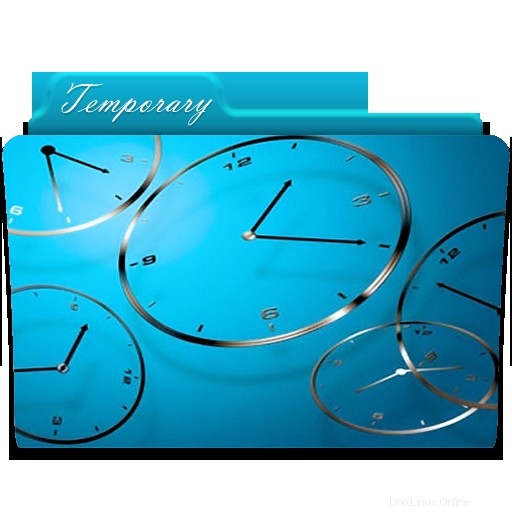
Introduzione
I file temporanei vengono utilizzati per archiviare temporaneamente i dati di cui il sistema operativo ha bisogno temporaneamente durante il funzionamento e scompariranno quando non saranno più necessari. scompariranno da soli dopo il riavvio.
Questo comando in Linux consente all'utente di creare un file o una directory temporanea nella cartella tmp. Ora ti insegneremo a usare il comando mktemp in Linux.
La sintassi del comando mktemp
La sintassi :
$ mktemp [option] … [template]
Ad esempio:
$ mktemp
Uscita:

Hai appena creato un file temporaneo nella directory tmp. E anche il nome del file viene generato automaticamente.
Inoltre:
Usage: mktemp [OPTION]... [TEMPLATE]
Create a temporary file or directory, safely, and print its name.
TEMPLATE must contain at least 3 consecutive `X's in last component.
If TEMPLATE is not specified, use tmp.XXXXXXXXXX, and --tmpdir is implied.
Files are created u+rw, and directories u+rwx, minus umask restrictions.
-d, --directory create a directory, not a file
-u, --dry-run do not create anything; merely print a name (unsafe)
-q, --quiet suppress diagnostics about file/dir-creation failure
--suffix=SUFF append SUFF to TEMPLATE. SUFF must not contain slash.
This option is implied if TEMPLATE does not end in X.
--tmpdir[=DIR] interpret TEMPLATE relative to DIR. If DIR is not
specified, use $TMPDIR if set, else /tmp. With
this option, TEMPLATE must not be an absolute name.
Unlike with -t, TEMPLATE may contain slashes, but
mktemp creates only the final component
-p DIR use DIR as a prefix; implies -t [deprecated]
-t interpret TEMPLATE as a single file name component,
relative to a directory: $TMPDIR, if set; else the
directory specified via -p; else /tmp [deprecated]
--help display this help and exit
--version output version information and exit
Report mktemp bugs to [email protected]
GNU coreutils home page: </software/coreutils/>
General help using GNU software: </gethelp/>
Report mktemp translation bugs to <http://translationproject.org/team/>
For complete documentation, run: info coreutils 'mktemp invocation'
Code language: HTML, XML (xml)Creazione di una directory temporanea
Per farlo. Aggiungiamo l'opzione -d nel comando:
$ mktemp -d
Uscita:

Assegna un nome al file temporaneo
Se vuoi dare un nome al file temporaneo, aggiungi più di 3 X alla fine. Ad esempio:
$ mktemp newfileXXX
Uscita:

Oppure puoi nominare la directory temporanea:
$ mktemp -d newdicXXX
Uscita:

Aggiunta del suffisso
Per farlo. Aggiungiamo l'opzione –suffix nel comando. Ad esempio:
$ mktemp newfileXXX --suffix ".txt"
Code language: JavaScript (javascript)Uscita:

Conclusione
Ti abbiamo appena insegnato a usare il comando mktemp in Linux.
Un altro articolo interessante potrebbe essere:Un modo semplice per installare GIT (Guida completa)